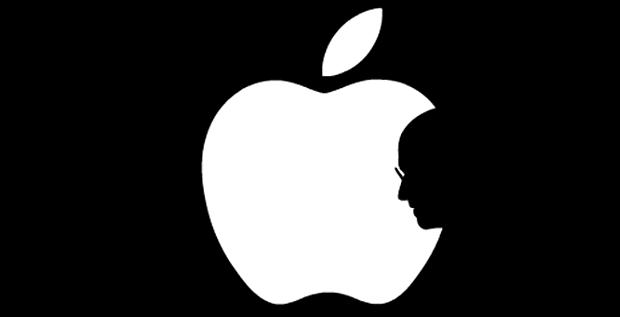
Mobile payments industry should learn lessons from the successful mobile music industry. Let’s look at Apple’s iPod – after all, it defines and owns the „mobile music” category. iPod is all about unparalleled user experience. It’s (a) open – iPod owner (and not Apple or record companies or somebody else) decides what nonpirated music is stored on it, (b) flexible – music can be downloaded from iTunes or CDs; and (c) ubiquitous – iTunes allows you to buy almost any music you want.
It took Apple – and Steve Jobs personally – incredible effort and dedication to deliver that user experience. According to Walter Isaacson, to ensure that no other company could replicate iPod, Apple signed an exclusive deal with Toshiba – at that time, the only manufacturer of miniature hard drives suited for that application.
To secure industry’s participation (i.e. content), Jobs personally courted and sweat-talked record companies into agreeing to sell music via his platform.
When they agreed, the task was far from over. Jobs knew that to succeed he had to offer music as individual tracks, not as albums. Resistance from the music industry was huge. Even after Jobs managed to overcome the objections of record companies, he still had to seek personal consent from individual artists too to split up the albums.
He personally (!) persuaded top artists including Madonna, Bono, Mick Jagger and Dr Dre. He even met with „niche” musicians, such as trumpeter Wynton Marsalis.
Only then Apple was able to deliver the „turning point for the music industry”, to use Jobs’ own words. Following the launch, even Apple expected to sell one million songs in six months. They sold a million songs in six… days.
Mobile wallet is not about payments – you have cards for that. Wallet is an interface and a container. If you lose your leather wallet, it’s gone and you are exposed. If you lose a smart wallet, it’s a different story.
Mobile wallet and smartwatches is not about making money – the latter is a (positive) side-effect of any product that strikes consumers’ hearts. It’s all about convenience, flexibility and choice. In other words – „user experience”.
To become the turning point in mobile payments, the killer mobile wallet has to be similar to iPod+iTunes: (a) open – it’s the consumer, i.e. wallet owner (and not a bank, mobile operator or handset manufacturer) who should be able to decide what goes into his/her wallet; (b) flexible – we store much more than just payment cards in our wallets (think of receipts, for example) and, most importantly, (c) ubiquitous.
Who is capable of developing the killer mobile wallet?
Not banks – they are too big and slow, too narrow-minded, and they don’t work well in a group (after all, mobile wallet is a multi-issuer product); not mobile operators – they are simply not part of the equation (the same goes for Apple, Google, Facebook et al.) If someone stands a chance, it has to be an entity connected or related to merchants. Not the acquirers – too many of them, and in direct competition with each other.
And the winner is…
EMV, i.e. Visa, MasterCard, Amex and China Union Pay. They control the „rails” between the retailers and the issuers. If they do unite (to prevent „contactless EMV madness” situation from happening again), they can build a truly open and ubiquitous mobile wallet. Worldwide. Most importantly – they can do that using existing infrastructure!
It’s dead simple: a physical uber-card with EMV-owned 16-digit token. Talking about ubiquity – there are over 50m retail outlets worldwide that accept payment cards. That physical uber-card is controlled via the „mobile wallet” app.
How it works
Consumer registers his/her bank cards with the mobile wallet; then it’s „business as usual”, both for the consumer and the retailer – no change of habit or modus operandi.
Via a mobile app, consumer chooses one of the registered bank cards for a given transaction – just as you would with a conventional leather wallet. Consumer then presents the physical uber-card – again, a familiar step, both for the consumer and the retailer. Transaction is routed to the corresponding scheme first where the uber-card’s token is mapped to the bank card which consumer chose for that transaction during the previous step. Details of that chosen bank card are then sent to the appropriate issuer in the normal way. The transactions are treated as „cardholder present” (rates/rules is the EMV’s call).
A smartphone and a single physical card, that’s your iTunes and iPod. Open, ubiquitous, simple and convenient. What’s not to love?
Source: Alexander Peschkoff’s blog on Finextra
For more comments and details please visit:
http://www.finextra.com/Community/FullBlog.aspx?blogid=8089
Alexander_Peschkoff
Trained as the military attache, Alexander Peschkoff (photo) started his career in the financial markets, becoming a certified fund manager. For the past ten years, Alexander has been successfully applying his analytical and lateral thinking skills in the high-tech entrepreneurial field, focusing on mobile telecom, payments and transit.
Creative pragmatic visionary, Alexander is the co-founder and CEO of TEDIPAY where he leads a team of microelectronics, transit and payment experts to bring to the market game-changing smart ticketing and mobile payments platform. TEDIPAY business partners include major transit operators and several high-profile financial companies, including MasterCard.
Banking 4.0 – „how was the experience for you”
„To be honest I think that Sinaia, your conference, is much better then Davos.”
Many more interesting quotes in the video below: